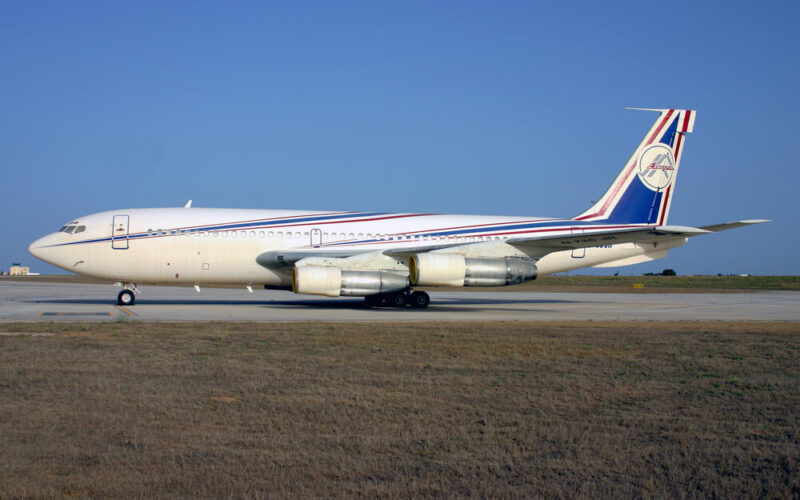With the introduction of the jet engine on the 707 in its commercial aircraft lineup in the 1950s, Boeing stuck with using the 7×7 naming formula. Yet one aircraft model is an oddball which does not fit the naming formula made up by Boeing’s marketing department ‒ the 720. Initially named the Boeing 707-020 and then the Boeing 717, the aircraft finally became known as the 720. A derivative of the Boeing 707, it featured the same four engines, but was smaller in size, as the United States aircraft manufacturer wanted to provide airlines with an option to have a much more efficient aircraft than the turboprops of the era, yet still be able to take off and land on much shorter runways.
The 707, which started flying on commercial routes with the now-bankrupt Pan American World Airways in 1958, was the predecessor for the 720. The two aircraft were different in size and wing design. The Boeing 720 was 9 feet (2.74 meters) shorter, with an increased wing sweep on the leading edge between the fuselage and inboard engines and full-span Kreuger leading-edge flaps. Boeing intended the 720 to serve short to medium-haul routes, spanning from 150 to 1,500 miles (241 to 2414 kilometers), and could carry a maximum of 149 passengers. Federal Aviation Administration (FAA) later certified a maximum capacity version, developed for Eastern Air Lines, to carry up to 170 passengers.
Due to its performance, Boeing claimed it was “the fastest jet in its class” as the “swift, luxurious 720 has a maximum cruising speed of 615 miles per hour,” an advertisement in Flight magazine from June 1959 stated.
“The versatile 720 will bring airlines the advantages of tremendous earnings, extremely high initial utilization, and unprecedented passenger appeal—as demonstrated by the brilliant success of Boeing jets already in service.”
And on November 23, 1959, the Boeing 720 completed its first flight.
A year later, on July 5, 1960, United Airlines commenced the first commercial flight with the type. A few months later, Boeing introduced the 720B version that had improved Pratt & Whitney JT3D engines, lowering fuel consumption and increasing performance. The 720B became the more successful version of the oddball, as the manufacturer built a total of 89 720Bs and 65 Boeing 720 aircraft.
Just in four years’ time, though, Boeing introduced a direct replacement for the 720 – the Boeing 727. Some of the 720 operators over the years include Aer Lingus, Air Malta, American Airlines (A1G) (AAL) , Braniff International Airways, Continental Airlines, Eastern Air Lines, Northwest Airlines, Lufthansa (LHAB) (LHA) , Pan American World Airways and United Airlines.

